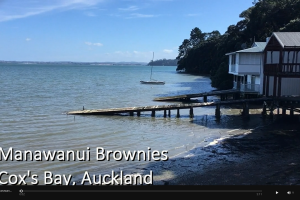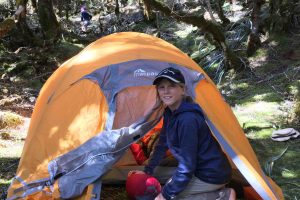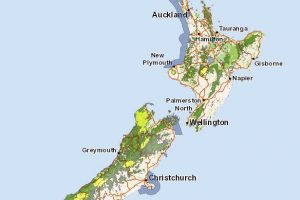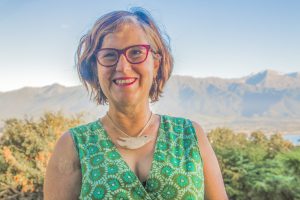
Ailsa Howard in 2018
By Ailsa Howard, Hutton’s Shearwater Charitable Trust, and Chairperson, F&B Kaikōura branch
In the South Island, about halfway between Christchurch and Picton, there are two parallel mountain ranges, known as the Inland and Seaward Kaikōuras. As mountains go, they are very young and steep, and the rocks that make them up are very soft and crumbly. Many areas are dangerous because of loose, slipping rocks, and rocks tumbling down from above. These mountains are dry, and harsh, and remote, but throughout them is something quite unexpected, something precious – colonies of a seabird called the Hutton’s shearwater (also known as Kaikōura tītī).
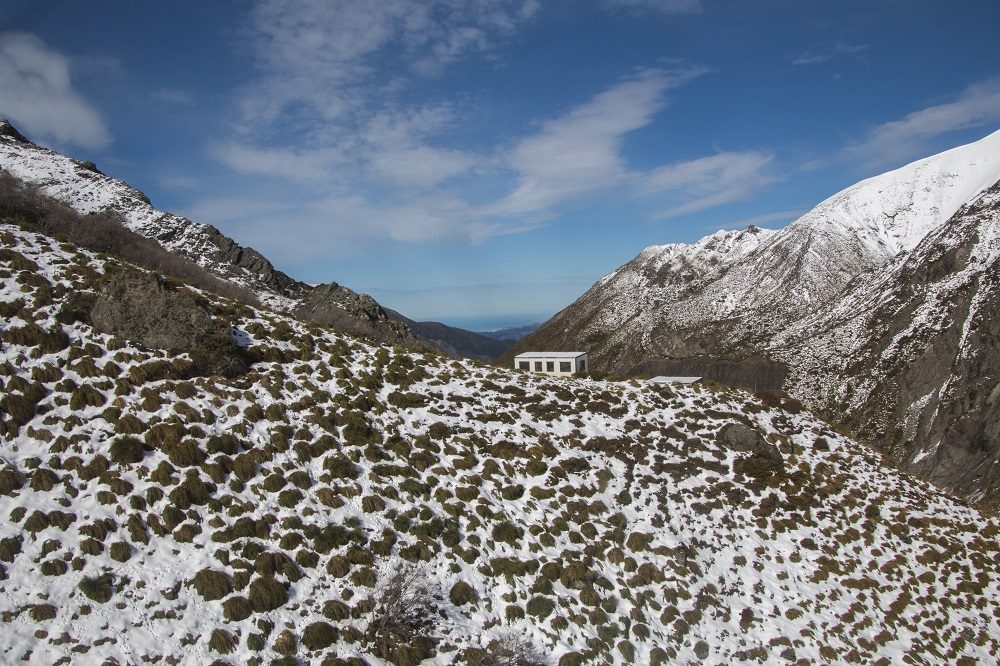
Kowhai Colony, ©Hutton’s Shearwater Trust
All seabirds live on the ocean, only returning to land to lay their eggs, but this species lays its eggs in burrows dug high in the mountains, and it is in fact the only alpine-breeding seabird in the world. Breeding and raising chicks in the ice and snow – that’s some feat!
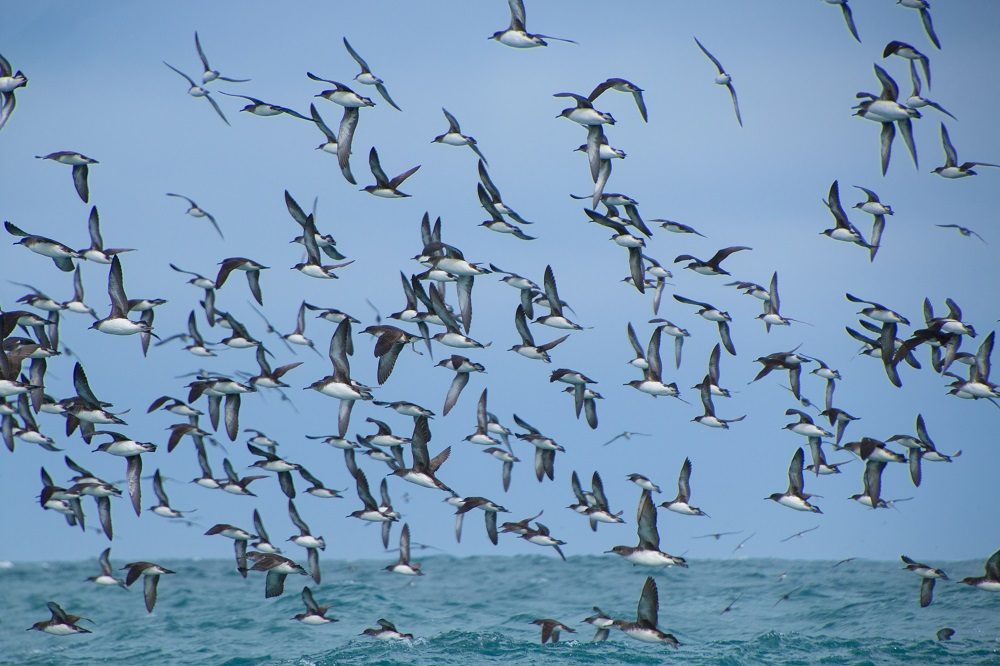
Hutton’s at sea, ©Hutton’s Shearwater Trust
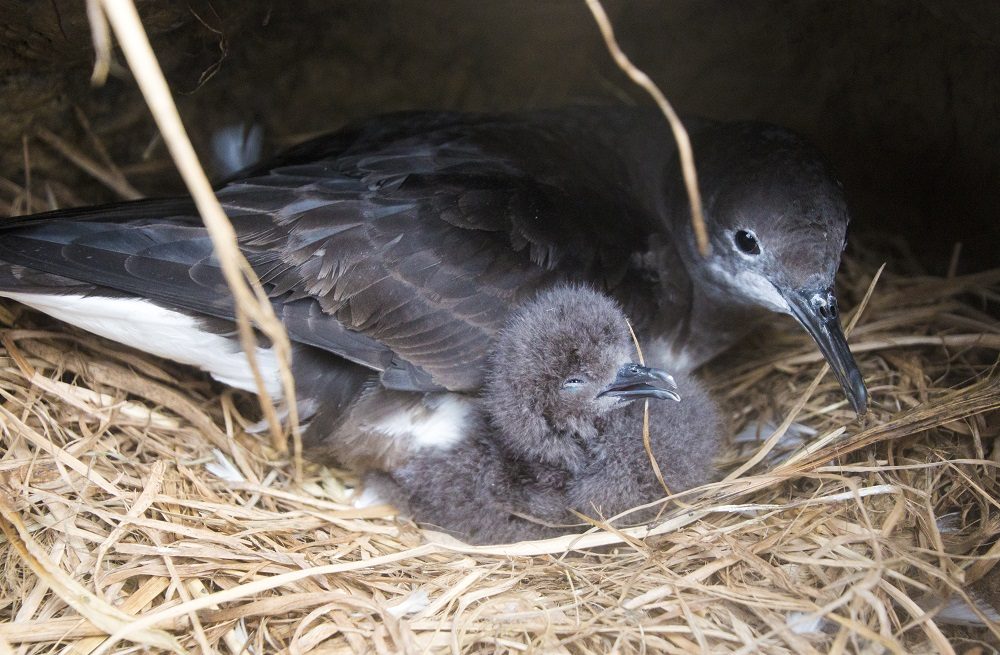
Adult and chick, ©Hutton’s Shearwater Trust
Although there were at least 8 colonies in the mid 1960’s, due to a rapid increase in wild pigs, very quickly within just a few years most colonies were eaten out, leaving only two remaining. These two special Hutton’s breeding places are protected by waterfalls which has meant pigs have, so far, been unable to get to them.
In the 1990s, Richard Cuthbert lived with the birds for 3 years, and studied them for his PhD. He brought to the world’s attention the importance of creating an “insurance” colony to protect this species, as the remaining breeding sites are very vulnerable to pigs gaining access at some point, but also to earthquakes which can bury the burrows and the birds inside.
In 2005, DOC and the Kaikōura Community, Rununga, Forest & Bird, and many other organisations, worked together to create a new Hutton’s colony, Te Rae O Atiu, on the Kaikōura Peninsula where Hutton’s can be protected from predators, earthquakes and falling rocks.
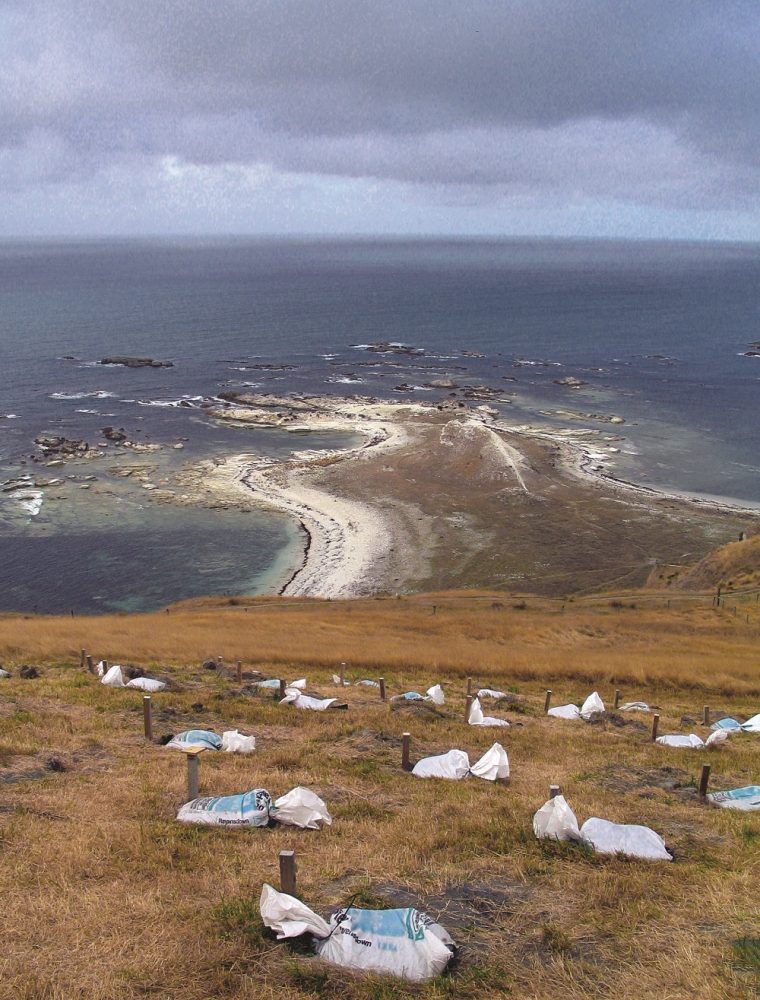
Man-made colony, ©Hutton’s Shearwater Trust
Titi chicks were brought down from the mountains to this new site, and hand fed by lots of volunteers, so that they imprinted on the site before they flew to sea. Now the chicks have grown up, they are returning to our man-made colony to lay their own eggs.
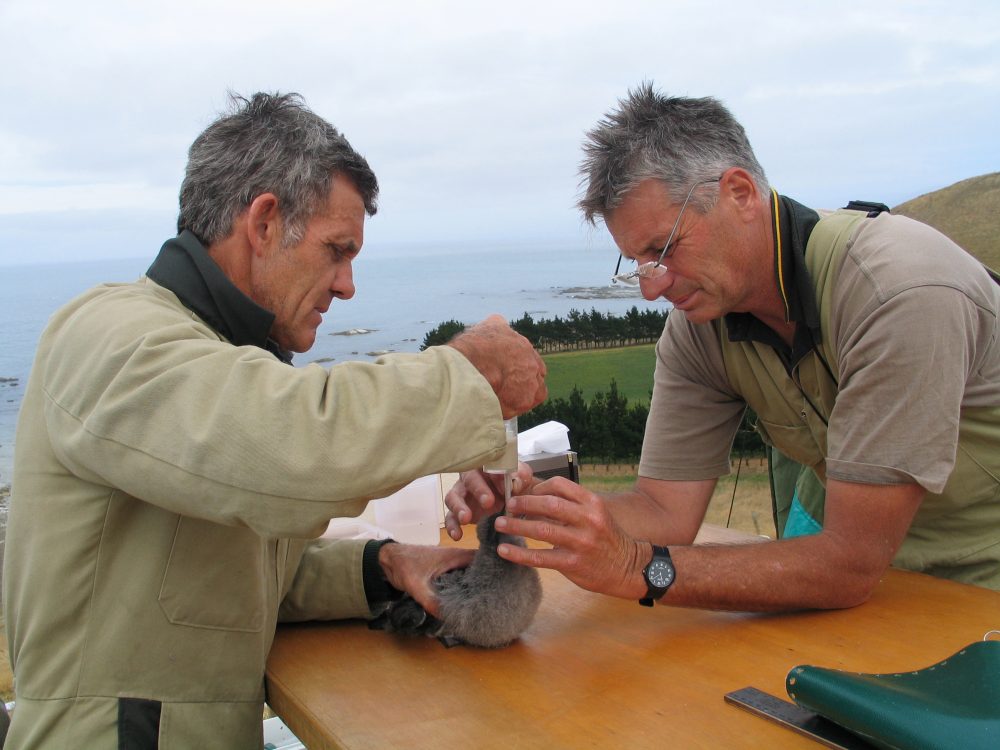
Hand-feeding, ©Hutton’s Shearwater Trust
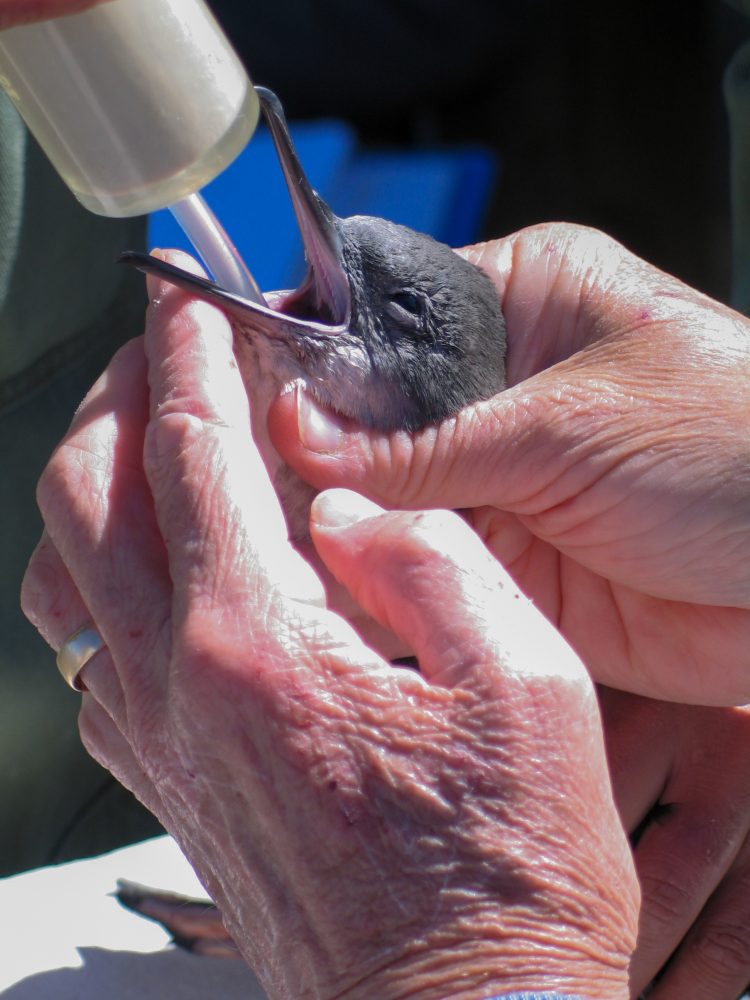
©Hutton’s Shearwater Trust
This year we have 17 new, healthy chicks laid by returning parents. Each year we have more chicks.
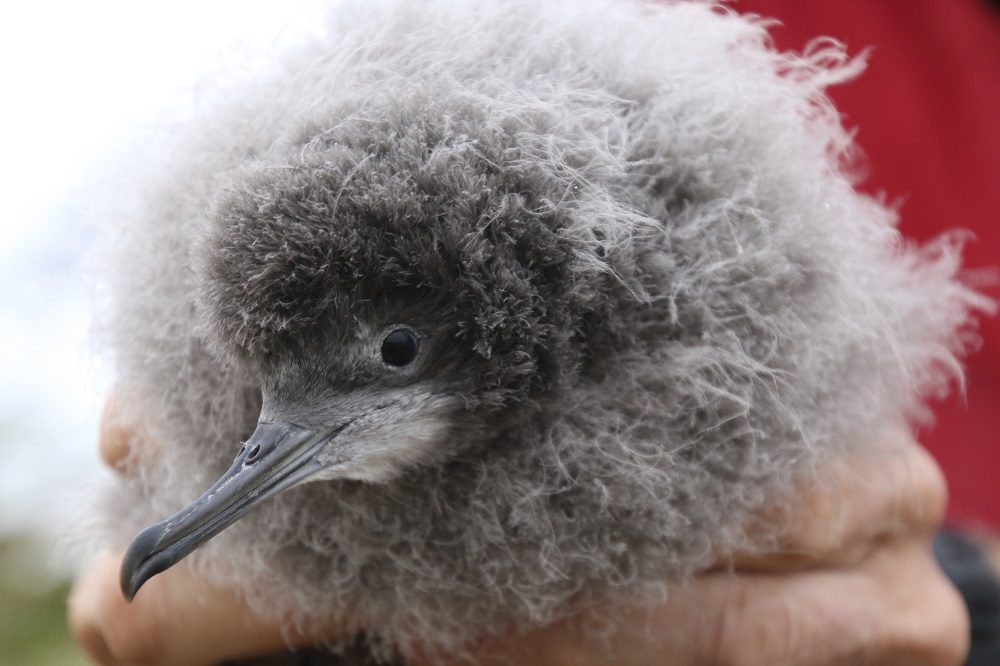
©Hutton’s Shearwater Trust
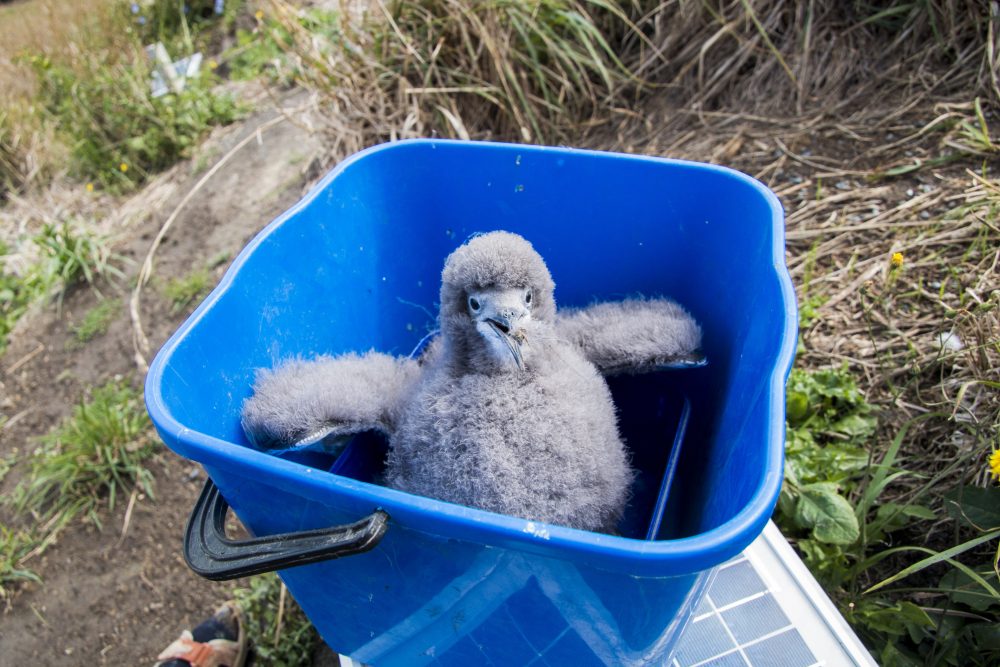
©Hutton’s Shearwater Trust
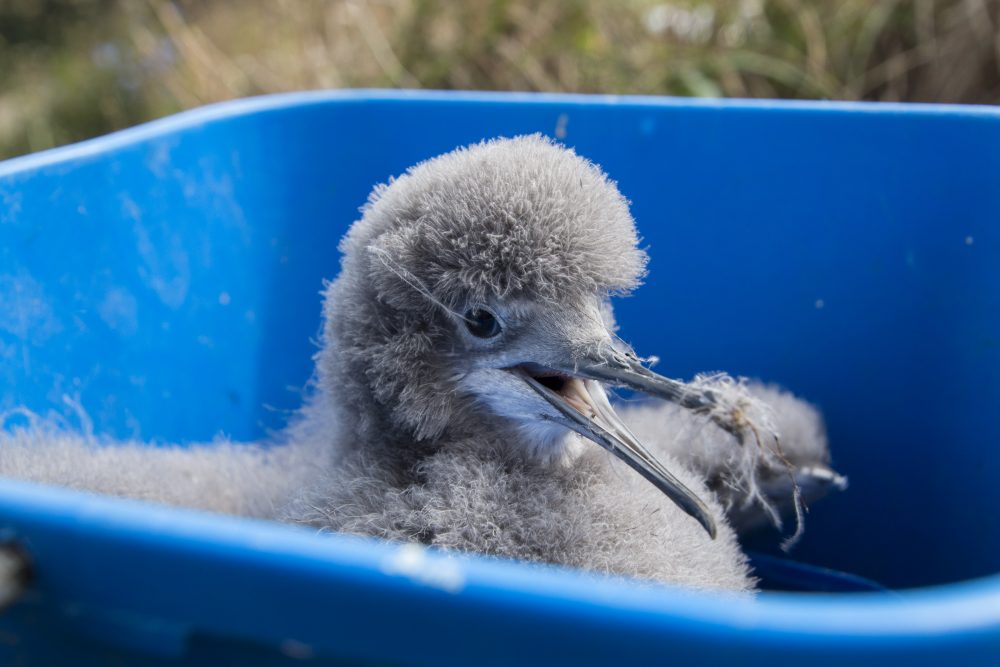
©Hutton’s Shearwater Trust
The foresight that made this happen has proved very important for the species, as the Kaikōura earthquake is thought to have killed around 100,000 breeding pairs. With team work from a community we are able to keep our special birds safe into the future.

